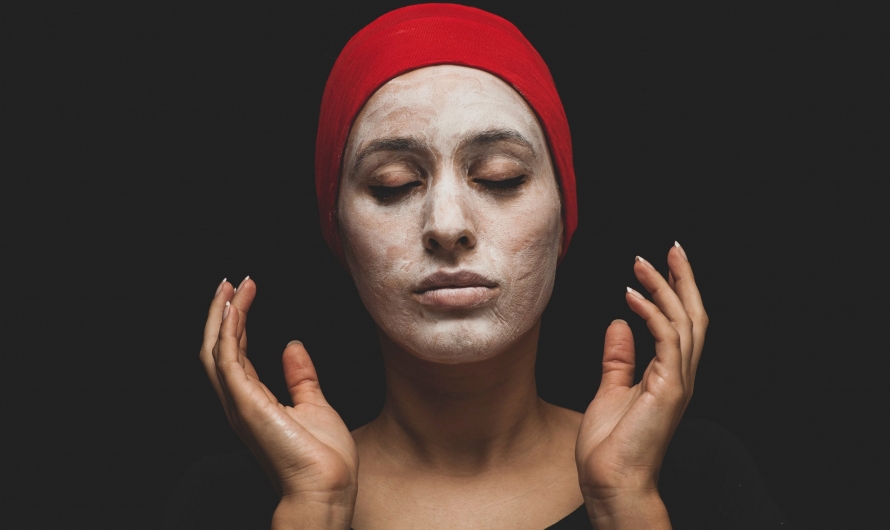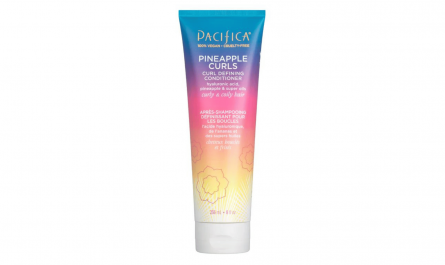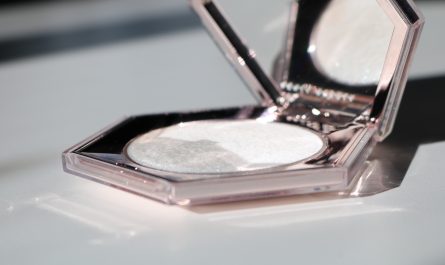Skincare is not just a vanity thing, it’s a health thing. Taking care of your skin can help prevent and treat various skin issues, such as acne, aging, dryness, sensitivity, and more. It can also improve your appearance, confidence, and well-being.
But how do you build a skincare routine that works for you? What are the essential steps and products you need to use every morning and night? And how do you adjust your routine according to your skin type, concern, season, and lifestyle?
In this article, we will guide you through the basics of building a skincare routine for every morning and night. We will also answer some frequently asked questions and give you some tips and tricks to make your skincare routine more effective and enjoyable.
Morning Skincare Routine
Your morning skincare routine is all about prevention and protection. Your face is going to be exposed to the outside environment, such as sun, pollution, dirt, and bacteria. Therefore, you need to cleanse your skin, hydrate it, and shield it from potential damage. Here are the three essential steps for your morning skincare routine:
Cleanser
The first step of your morning skincare routine is to cleanse your skin. This will help remove any grime, residue, oil, or sweat that has built up overnight. It will also prepare your skin to absorb the next products better.
You should use a gentle cleanser that suits your skin type and does not strip your skin of its natural oils or disrupt its pH balance. For example, if you have dry or sensitive skin, you may want to use a hydrating cleanser that contains ingredients like glycerin, hyaluronic acid, or ceramides. If you have oily or acne-prone skin, you may want to use a foaming cleanser that contains ingredients like salicylic acid, benzoyl peroxide, or tea tree oil.
To cleanse your skin properly, wet your face with lukewarm water and apply a small amount of cleanser on your fingertips. Massage it gently on your face in circular motions for about a minute. Rinse it off with lukewarm water and pat your face dry with a clean towel.
Moisturizer
The second step of your morning skincare routine is to moisturize your skin. This will help replenish the moisture that your skin may have lost during cleansing or overnight. It will also help lock in the hydration and create a smooth base for your makeup.
You should use a moisturizer that suits your skin type and provides enough hydration without being too heavy or greasy. For example, if you have dry or mature skin, you may want to use a cream or balm moisturizer that contains ingredients like shea butter, avocado oil, or collagen. If you have oily or combination skin, you may want to use a gel or lotion moisturizer that contains ingredients like hyaluronic acid, niacinamide, or green tea.
To moisturize your skin properly, apply a pea-sized amount of moisturizer on your fingertips and dot it on your forehead, cheeks, nose, and chin. Gently spread it all over your face and neck in upward strokes until it is fully absorbed.
Sunscreen
The third and final step of your morning skincare routine is to apply sunscreen. This is the most important step of all, as it will help protect your skin from the harmful effects of the sun, such as premature aging, hyperpigmentation, and skin cancer.
You should use a sunscreen that has at least SPF 30 and broad-spectrum protection, which means it can block both UVA and UVB rays. You should also look for a sunscreen that is water-resistant, non-comedogenic, and suitable for your skin type and tone. For example, if you have dry or sensitive skin, you may want to use a mineral sunscreen that contains zinc oxide or titanium dioxide, which are gentle and soothing. If you have oily or acne-prone skin, you may want to use a chemical sunscreen that contains avobenzone or octinoxate, which are lightweight and fast-absorbing.
To apply sunscreen properly, use about a teaspoon of sunscreen for your face and neck and apply it as the last step of your skincare routine. Make sure to cover all the exposed areas of your skin, including your ears, hairline, and eyelids. Reapply it every two hours or more frequently if you sweat or swim.
Night Skincare Routine
Your night skincare routine is all about repair and restoration. Your skin is going to enter a regenerative mode while you sleep, so you need to remove any makeup, dirt, or bacteria that may interfere with this process. You also need to nourish your skin with active ingredients that can help address your specific skin concerns and enhance your skin’s natural healing abilities. Here are the seven essential steps for your night skincare routine:
Makeup Remover/Cleansing Oil
The first step of your night skincare routine is to remove any makeup, sunscreen, or oil that you may have worn during the day. This will help prevent clogged pores, breakouts, irritation, and infection. It will also make your cleanser’s job easier.
You should use a makeup remover or cleansing oil that can effectively dissolve and lift off any stubborn or waterproof makeup without tugging or rubbing your skin. For example, you can use a micellar water or a cleansing balm with cotton pads or a reusable cloth. You can also use an emulsifying oil that can rinse off with water.
To remove your makeup properly, soak a cotton pad or cloth with the product and gently wipe it over your face and eyes until all traces of makeup are gone. Alternatively, massage the product on your dry face with your fingertips until all the makeup is melted. Rinse it off with lukewarm water or follow up with a cleanser.
Cleanser
The second step of your night skincare routine is to cleanse your skin again. This will help remove any residue or impurities that may still be left on your skin after removing your makeup. It will also help balance your skin’s pH level and prepare it for the next products.
You should use the same cleanser that you used in the morning, unless you have specific skin concerns that require a different cleanser at night. For example, if you have dull or aging skin, you may want to use a cleanser that contains exfoliating ingredients like alpha hydroxy acids (AHAs) or retinol at night. If you have sensitive or irritated skin, you may want to use a cleanser that contains soothing ingredients like oatmeal or chamomile at night.
To cleanse your skin properly at night, follow the same steps as in the morning.
Targeted or Spot Treatments
The third step of your night skincare routine is to apply any targeted or spot treatments that can help address your specific skin concerns. This is the best time to use products that contain active ingredients that can penetrate deeper into your skin and work more effectively while you sleep. These include serums, essences, ampoules, toners, prescription products, and more.
Some of the common targeted treatments are:
- Acne treatments: These contain ingredients like salicylic acid, benzoyl peroxide, tea tree oil, or sulfur that can help kill bacteria, unclog pores, and reduce inflammation. You can use them as spot treatments on active breakouts or as preventive treatments on acne-prone areas.
- Anti-aging treatments: These contain ingredients like retinol, vitamin C, peptides, or collagen that can help stimulate cell renewal, boost collagen production, and reduce signs of aging. You can use them all over your face or on specific areas that need more attention, such as the forehead, around the eyes, or the nasolabial folds.
- Brightening treatments: These contain ingredients like niacinamide, kojic acid, azelaic acid, or licorice root that can help lighten and even out your skin tone, fade dark spots and hyperpigmentation, and enhance your skin’s radiance. You can use them all over your face or on specific areas that need more brightening, such as the cheeks, around the mouth, or the under-eye area.
To apply targeted treatments properly, use a few drops or a pea-sized amount of the product and apply it on clean and dry skin. Gently massage it into your skin until it is fully absorbed. Wait for a few minutes before applying the next product to avoid mixing or diluting the active ingredients.
Hyaluronic Acid Serum
The fourth step of your night skincare routine is to apply a hyaluronic acid serum. Hyaluronic acid is a humectant that can attract and retain moisture in your skin. It can help plump up your skin, smooth out fine lines and wrinkles, and enhance your skin’s elasticity and firmness. It can also help boost the hydration and effectiveness of your other products.
You should use a hyaluronic acid serum that has a high concentration and low molecular weight of hyaluronic acid. This will ensure that it can penetrate deeper into your skin and deliver more hydration. You should also look for a hyaluronic acid serum that contains other hydrating ingredients like glycerin, panthenol, or aloe vera.
To apply a hyaluronic acid serum properly, use a few drops of the serum and apply it on damp skin. This will help lock in the moisture and prevent evaporation. Gently pat it into your skin until it is fully absorbed.
Eye Cream
The fifth step of your night skincare routine is to apply an eye cream. The skin around your eyes is thinner and more delicate than the rest of your face. It is also more prone to dryness, puffiness, dark circles, and signs of aging. Therefore, you need to use a special product that can cater to the needs of this area.
You should use an eye cream that suits your eye concern and preference. For example, if you have dry or mature eyes, you may want to use an eye cream that contains moisturizing and anti-aging ingredients like shea butter, avocado oil, retinol, or peptides. If you have puffy or dark eyes, you may want to use an eye cream that contains cooling and brightening ingredients like caffeine, cucumber, vitamin C, or niacinamide.
To apply an eye cream properly, use a rice-sized amount of the product for each eye and apply it with your ring finger. This will ensure that you use gentle pressure and avoid tugging or pulling the skin. Dot the product along the orbital bone under your eye and gently tap it in until it is fully absorbed.
Moisturizer
The sixth step of your night skincare routine is to apply a moisturizer again. This will help seal in all the previous products and provide an extra layer of hydration and nourishment for your skin. It will also help repair and restore your skin’s natural barrier function, which is essential for keeping your skin healthy and balanced.
You should use the same moisturizer that you used in the morning, unless you have specific skin concerns that require a different moisturizer at night. For example, if you have dry or mature skin, you may want to use a richer or thicker moisturizer that contains more emollients and occlusives, such as lanolin, petrolatum, or beeswax. If you have oily or acne-prone skin, you may want to use a lighter or oil-free moisturizer that contains more humectants and mattifying agents, such as hyaluronic acid, glycolic acid, or silica.
To apply a moisturizer properly at night, follow the same steps as in the morning.
Optional Face Oil or Occlusive
The seventh and final step of your night skincare routine is to apply an optional face oil or occlusive. This is an extra step that you can add if you have very dry or dehydrated skin, or if you want to boost the hydration and protection of your skin. A face oil or occlusive can help lock in all the moisture and prevent water loss from your skin. It can also help nourish your skin with essential fatty acids and antioxidants.
You should use a face oil or occlusive that suits your skin type and preference. For example, if you have dry or mature skin, you may want to use a face oil that contains nourishing and anti-aging oils like rosehip, argan, jojoba, or marula. If you have oily or acne-prone skin, you may want to use a face oil that contains balancing and anti-inflammatory oils like grapeseed, hemp, squalane, or tea tree. Alternatively, you can use an occlusive product that contains ingredients like petrolatum, lanolin, dimethicone, or beeswax.
To apply a face oil or occlusive properly, use a few drops of the oil or a pea-sized amount of the product and apply it as the last step of your skincare routine. Gently massage it into your skin until it is fully absorbed.
Conclusion
Building a skincare routine for every morning and night can help you achieve healthy and beautiful skin. By following the basic steps and products we have outlined above, you can cleanse, hydrate, protect, repair, and restore your skin effectively and safely. You can also customize your skincare routine according to your skin type, concern, season, and lifestyle.
However, remember that skincare is not a one-size-fits-all thing. You may need to experiment with different products and adjust your routine as you go along. You may also need to consult a dermatologist if you have any serious skin issues or questions. The most important thing is to listen to your skin and give it what it needs.
FAQs
Q1: How often should I change my skincare routine?
A1: There is no definitive answer to how often you should change your skincare routine. It depends on various factors, such as your skin condition, the season, the climate, your age, your hormones, and more. Generally speaking, you should change your skincare routine when:
- Your skin changes due to internal or external factors
- Your products stop working or cause irritation
- You run out of your products or want to try something new
- You have a specific goal or concern that requires a different approach
However, you should not change your skincare routine too frequently or drastically. This may confuse your skin and cause more problems. You should also introduce new products gradually and one at a time. This will help you monitor their effects and avoid potential reactions.
Q2: How do I know if a skincare product is working for me?
A2: The best way to know if a skincare product is working for you is to observe your skin closely and regularly. You should look for signs of improvement or deterioration in your skin’s appearance, texture, tone, and feel. You should also pay attention to how your skin reacts to the product immediately and over time.
Some of the signs that a skincare product is working for you are:
- Your skin looks more hydrated, plump, smooth, and radiant
- Your skin feels more comfortable, soft, supple, and balanced
- Your skin has fewer breakouts, redness, inflammation, or irritation
- Your skin has less visible signs of aging, such as fine lines, wrinkles, sagging, or dullness
- Your skin has more even and bright skin tone, with less dark spots, hyperpigmentation, or discoloration
Some of the signs that a skincare product is not working for you or causing harm are:
- Your skin looks more dry, flaky, rough, or dull
- Your skin feels more tight, itchy, stingy, or oily
- Your skin has more breakouts, redness, inflammation, or irritation
- Your skin has more visible signs of aging, such as fine lines, wrinkles, sagging, or dullness
- Your skin has more uneven and dark skin tone, with more dark spots, hyperpigmentation, or discoloration
However, you should also keep in mind that some skincare products may take longer to show results than others. For example, moisturizers and sunscreens may have immediate effects, while serums and treatments may take weeks or months to see noticeable changes. You should also consider the type and severity of your skin concern and the strength and concentration of the product. You should give each product a fair trial period before deciding whether it works for you or not.
Q3: What are some common skincare mistakes to avoid?
A3: Skincare can be tricky and confusing sometimes. You may make some mistakes that can affect your skin’s health and beauty. Here are some common skincare mistakes to avoid:
- Using the wrong products for your skin type or concern
- Using too many products or ingredients at once
- Skipping or overdoing any step of your skincare routine
- Not cleansing your skin properly or thoroughly
- Not moisturizing your skin enough or at all
- Not wearing sunscreen every day or reapplying it frequently
- Not patch testing new products before using them on your face
- Not changing your pillowcase or washing your makeup brushes regularly
- Not drinking enough water or eating a balanced diet
- Not getting enough sleep or managing your stress levels
By avoiding these mistakes, you can improve your skincare routine and your skin’s condition.
Q4: How can I customize my skincare routine for my skin type and concern?
A4: Customizing your skincare routine for your skin type and concern can help you achieve better results and satisfaction. You can customize your skincare routine by:
- Choosing the right products and ingredients for your skin type and concern
- Adjusting the amount and frequency of using each product according to your skin’s needs
- Adding or removing any step or product that is not necessary or beneficial for your skin
- Switching to different products or ingredients depending on the season, climate, or occasion
- Experimenting with different combinations or sequences of products to find what works best for you
However, you should also be careful not to over-customize your skincare routine. You should not use too many products or ingredients that may conflict or cancel out each other. You should also not change your skincare routine too often or without a good reason. You should always listen to your skin and consult a dermatologist if you have any doubts or questions.
Q5: What are some natural or DIY skincare products I can use?
A5: Natural or DIY skincare products can be a good alternative or supplement to your regular skincare products. They can be cheaper, safer, and more eco-friendly than some commercial products. They can also provide some unique benefits and experiences for your skin.
However, you should also be aware of the potential risks and limitations of natural or DIY skincare products. They may not be as effective, stable, or consistent as some commercial products. They may also cause allergic reactions or infections if they are not prepared or stored properly. You should always do your research and patch test before using any natural or DIY skincare product.
Some of the common natural or DIY skincare products you can use are:
- Honey: A natural humectant and antibacterial that can hydrate and heal your skin.
- Oatmeal: A natural anti-inflammatory and exfoliant that can soothe and smooth your skin.
- Yogurt: A natural source of lactic acid and probiotics that can brighten and balance your skin.
- Coconut oil: A natural emollient and antimicrobial that can moisturize and protect your skin.
- Aloe vera: A natural soothing and healing agent that can calm and repair your skin.
- To use these natural or DIY skincare products, you can either apply them directly on your skin or mix them with other ingredients to make your own masks, scrubs, toners, or moisturizers. You can find many recipes and tutorials online or create your own based on your preference and creativity.




